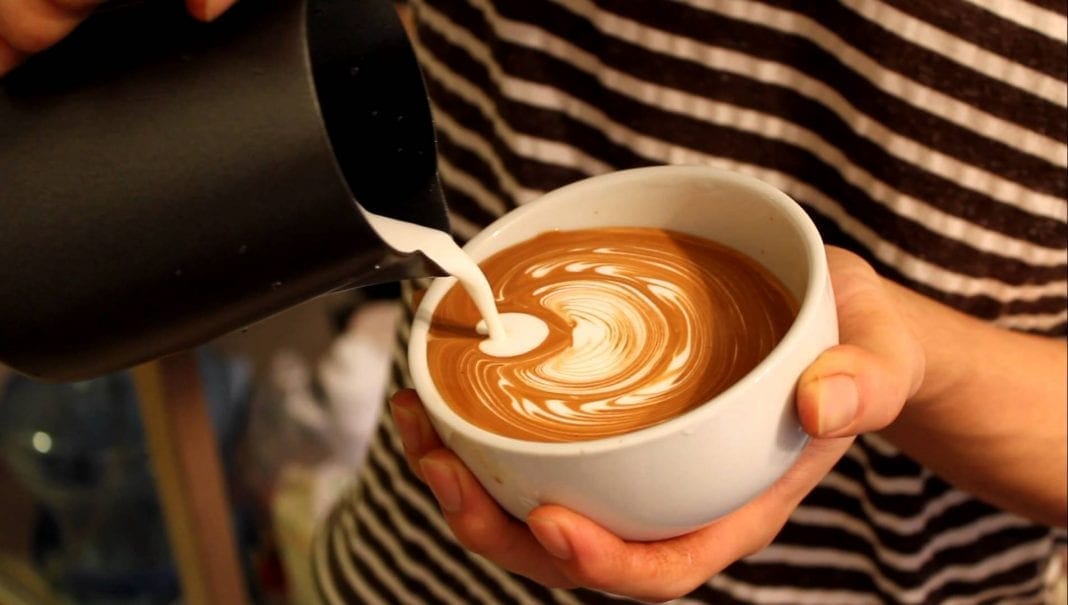You just love the beautiful designs the barista makes in the foam topping of your cappuccinos or lattes served at your favorite coffee shop. Are those designs just a form of fun or are they a form of coffee art? Is coffee art really considered art?
By studying a few details about the process of making designs with milk foam, cream, and espresso, we’ll help answer that question.
The Presence of Latte Art Has an Impact on Consumers’ Collective Perceptions of Value and Taste
Lattes and cappuccino are high-end types of coffees, however, they’re not necessities. Consumers focus more on the appearance, presentation and entire experience of tasting a delicious cappuccino or latte. Buying a pricey latte is a luxury for most people so they have increased expectations.
By offering coffee in a beautifully crafted package, coffee shops connect with their customers, converting them into loyal consumers. When you’re handed a beautifully and amazingly-designed latte you emotionally react by perceiving a sense of high value and taste even before your first sip.
Consumers appreciate the work and expertise involved in creating the fantastic designs. Through latte art, baristas are adding incredible value to consumers’ experience.
It Takes Time to Get to Know the Art Process
Although coffee art isn’t rocket science, you still need to know the basics of liquid dynamics to understand how milk foam and crema interact with espresso. Also, you’ll want to bring out your inner artist. It takes skills and dedication to reach art perfection.
You can’t make a beautiful latte by just adding the foam on top of the espresso. You should make microfoam by steaming milk at high heat. You pour the milk foam into the coffee cup over the espresso in a way in which the liquid milk pours first, followed by the foam. Be careful with the height and position of the pitcher when you pour the steamed milk. You can create leafs, Rosetta, heart or flower patterns. Do some online research and check a website about coffee makers so you can choose what type of brewed coffee will best hold the milk foam.
To make a flower pattern you should poor milk about 2 or 3 cm away from the surface of the espresso liquid. When the cup is about halfway full, you should shake your pitcher slowly in a back and forth motion. Also, make sure you’re moving backward so the flower print moves forward while filling the cup. Only shake your wrist back and forth to create a fantastic flower design.
You Develop Your Own Art Process
You can create different other forms of coffee art designs by practicing various movements and by using tools such as stencils. Pour the foam from different heights to create other textures.
You can use a toothpick to draw characters or animal faces into the milk foam. If you like Disney, try to design a Mikey Mouse cartoon in the milk foam. It’s up to you to own your skill.
You Create and Prioritize Experimenting
You can sprinkle a bit of brewed coffee over the milk foam to design fantasy characters. You can experiment and play around with several alternating layers of coffee and milk in your latte. Pour the espresso, on top of which you should pour cold milk, add another layer of espresso and then pour the milk foam on top. Use some spices such as cinnamon or even some chocolate powder and sprinkle them on top of the milk foam. This will help you highlight the shapes you’ve created with the milk foam and create depth.
One of The Most Important Elements of Art Is Percolation
To make the best tasting espresso for your latte you should calculate the right level of percolation. The coffee grind should be prepared with the right dynamics of liquids to make a perfectly tasting espresso bed for your latte.
To guarantee that the milk won’t mix in with the espresso you should add it in colder temperatures than the coffee so its sets over the espresso in a beautiful white layer.
You can design a magnificent flow of black and white visuals to prepare an amazing canvas for your coffee art.

